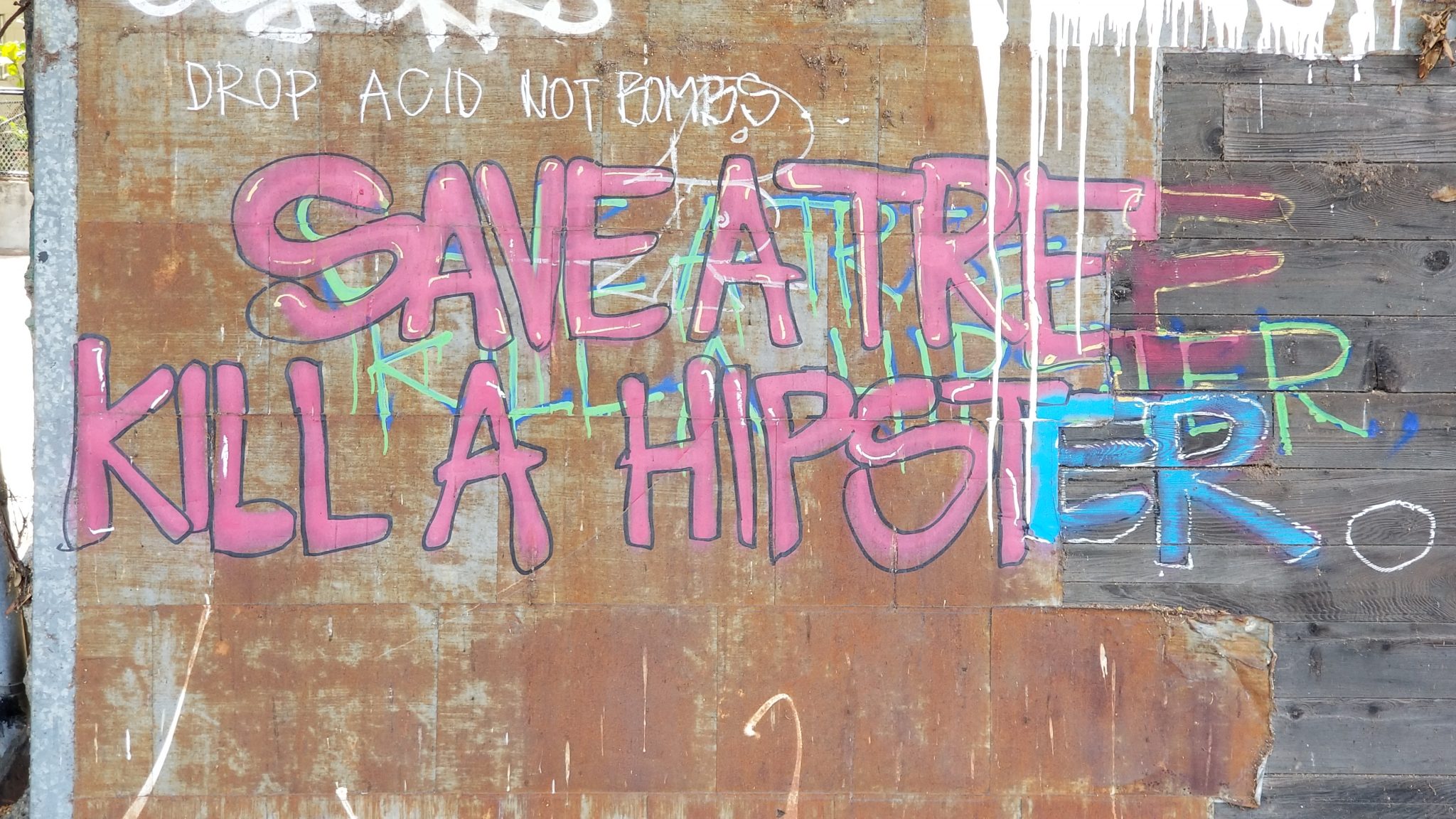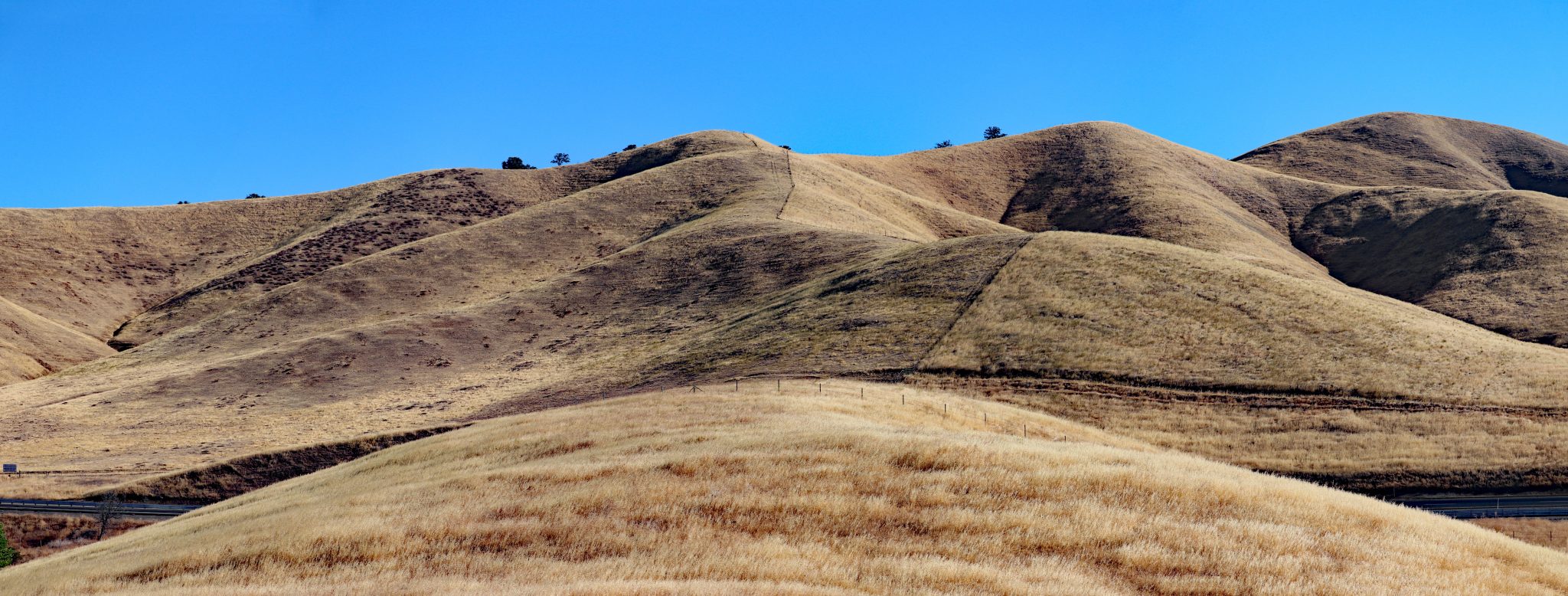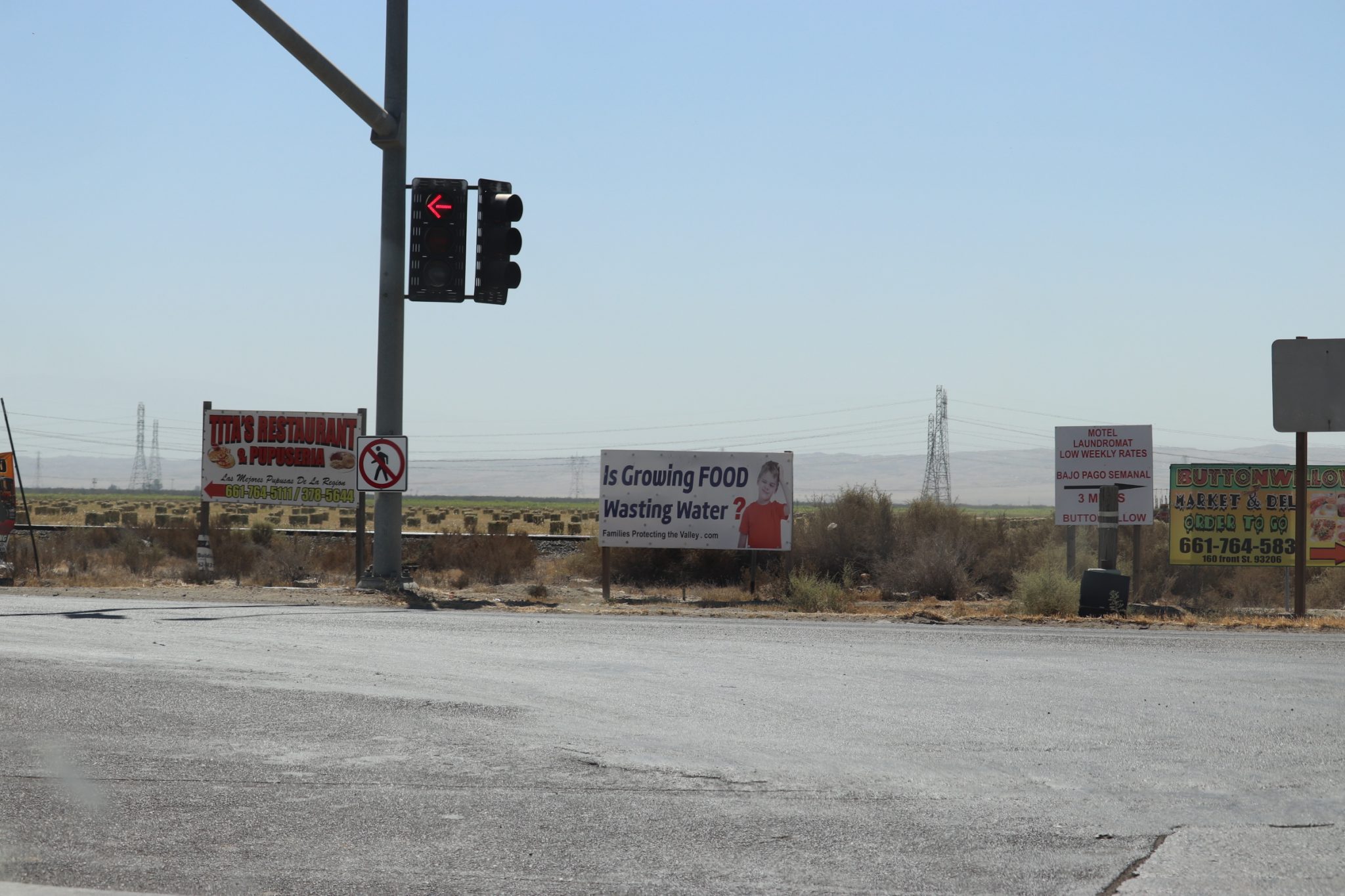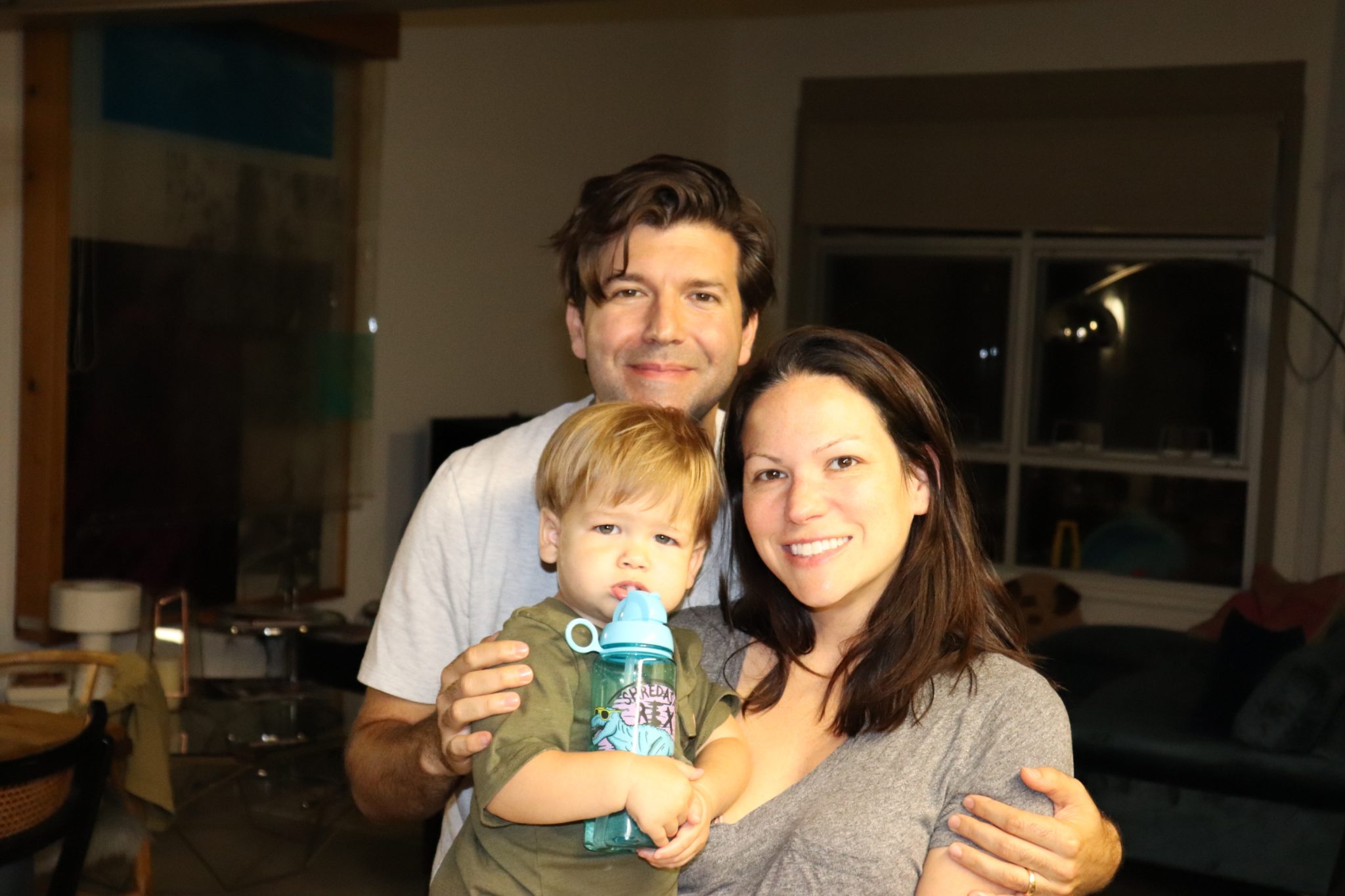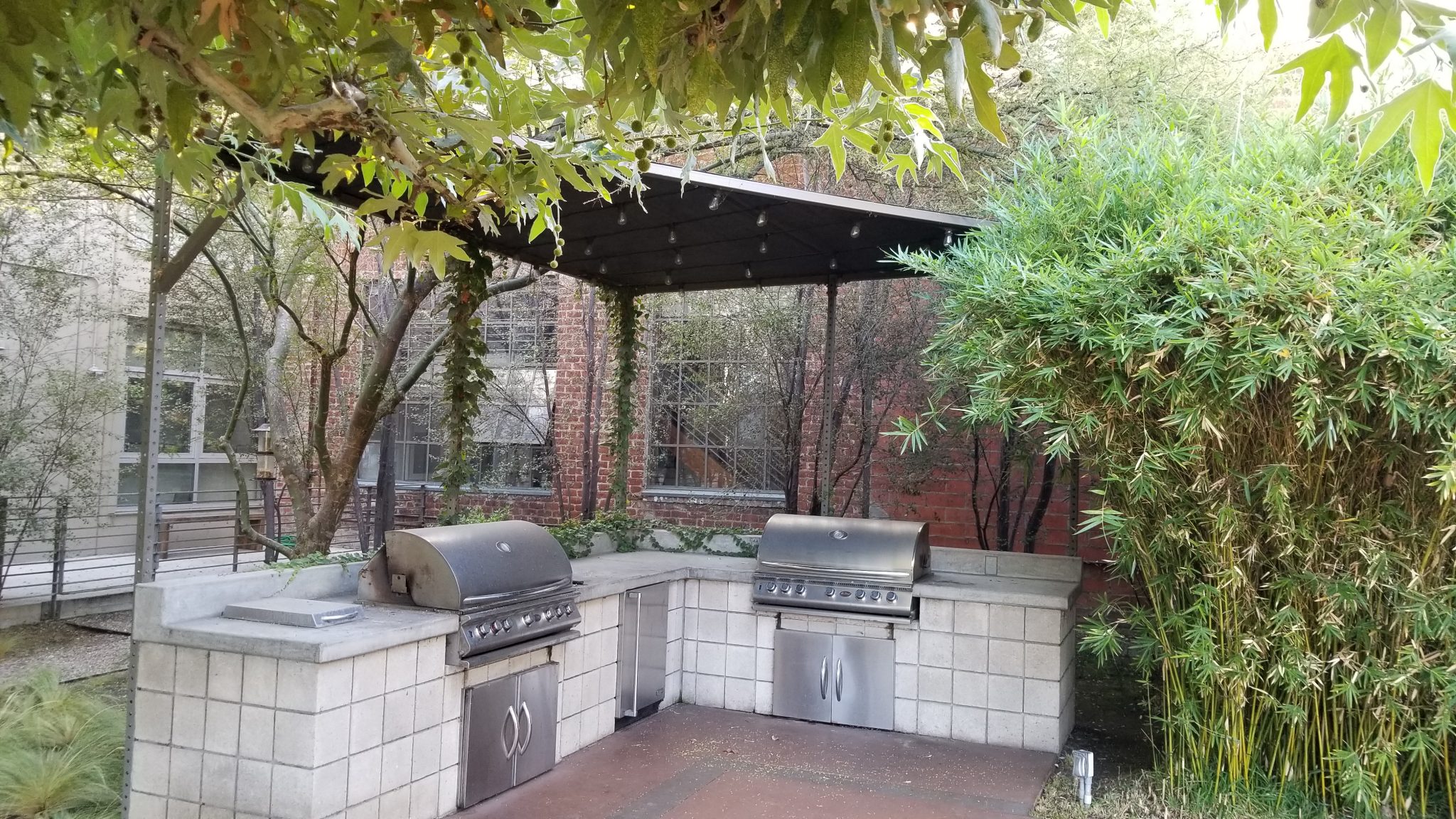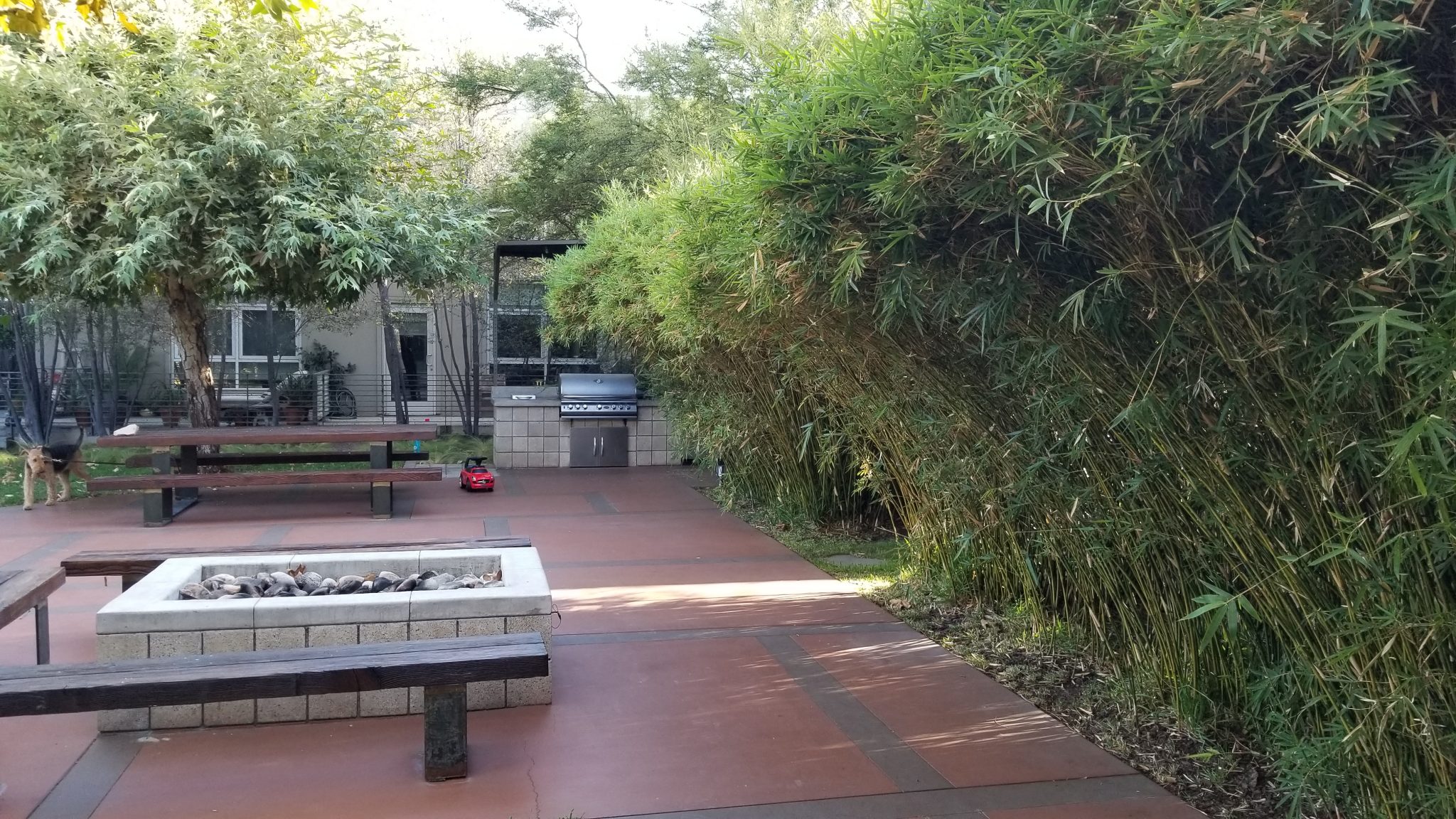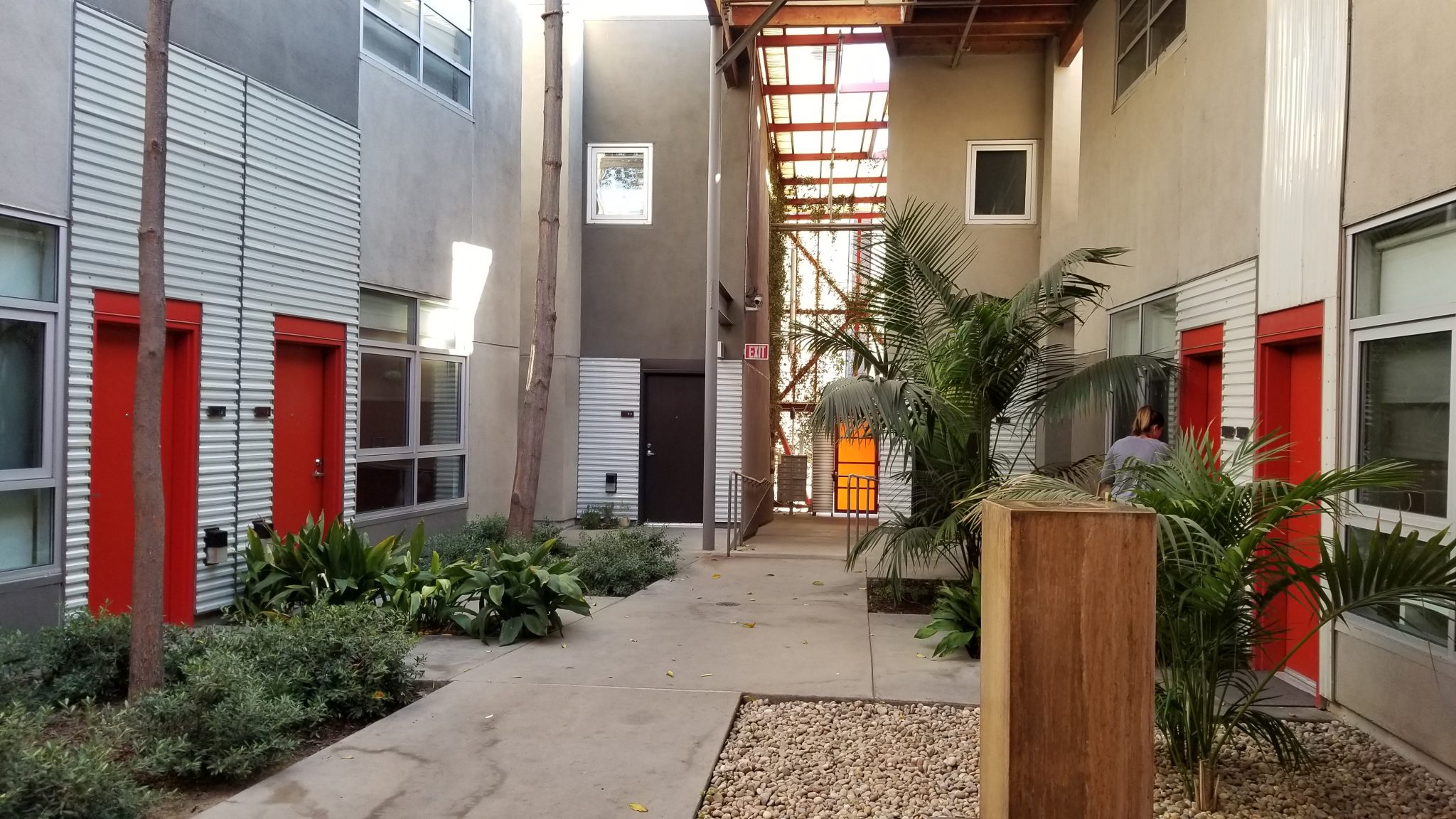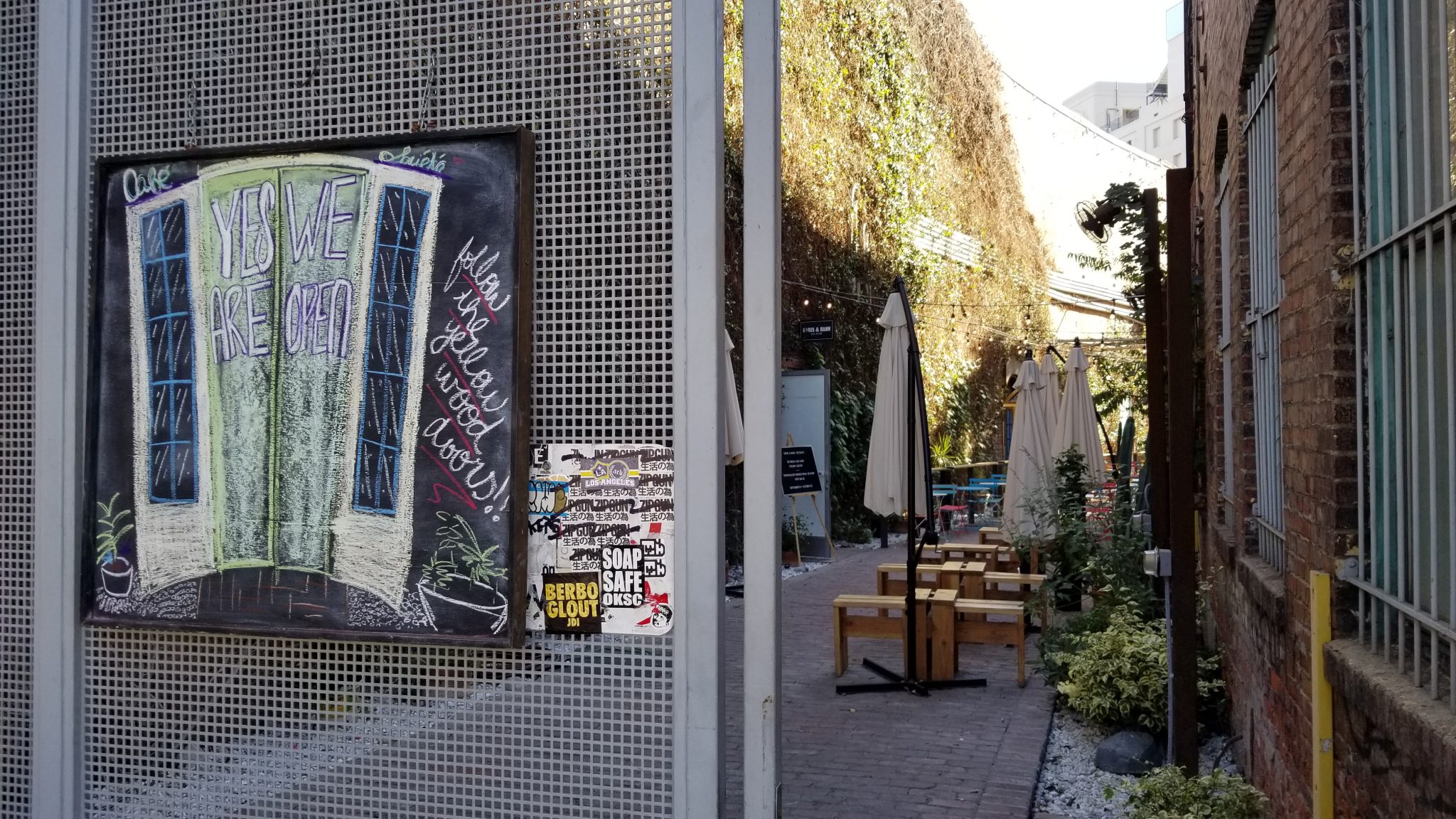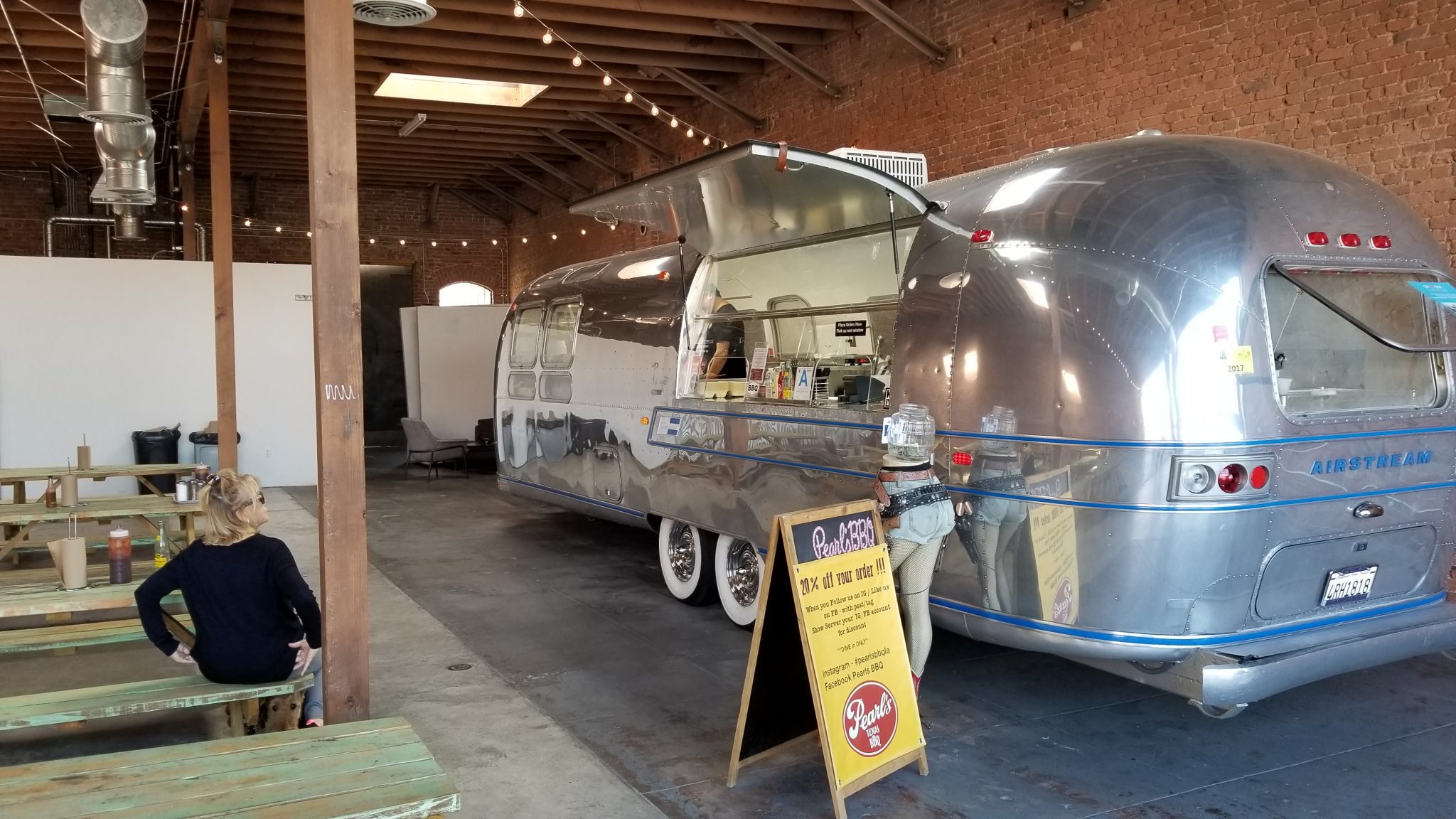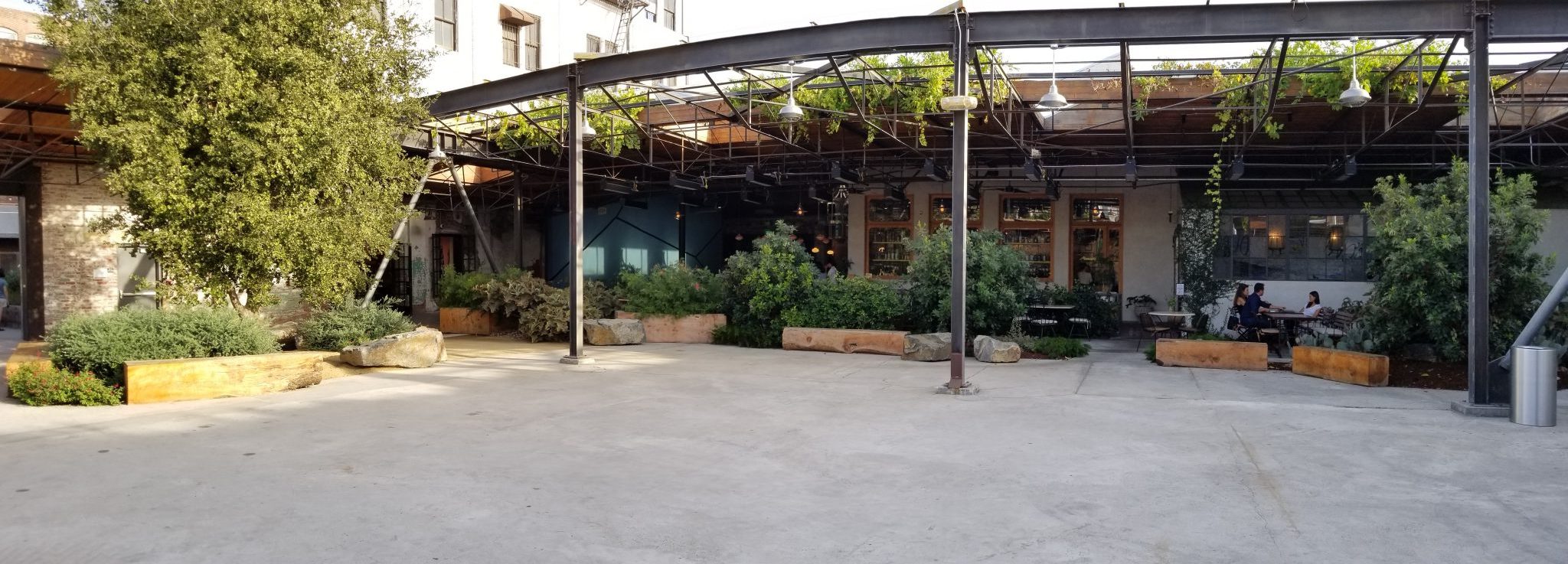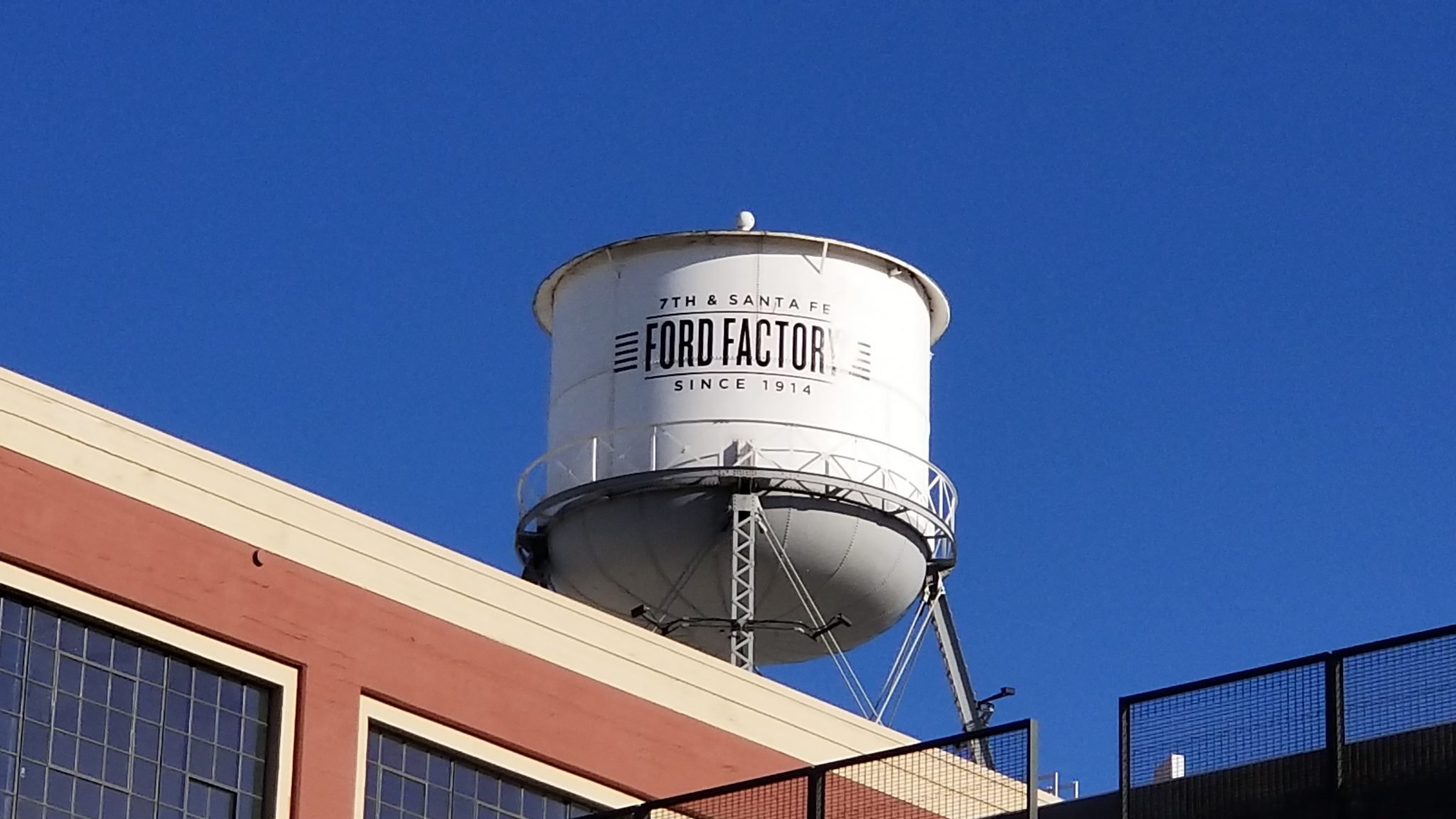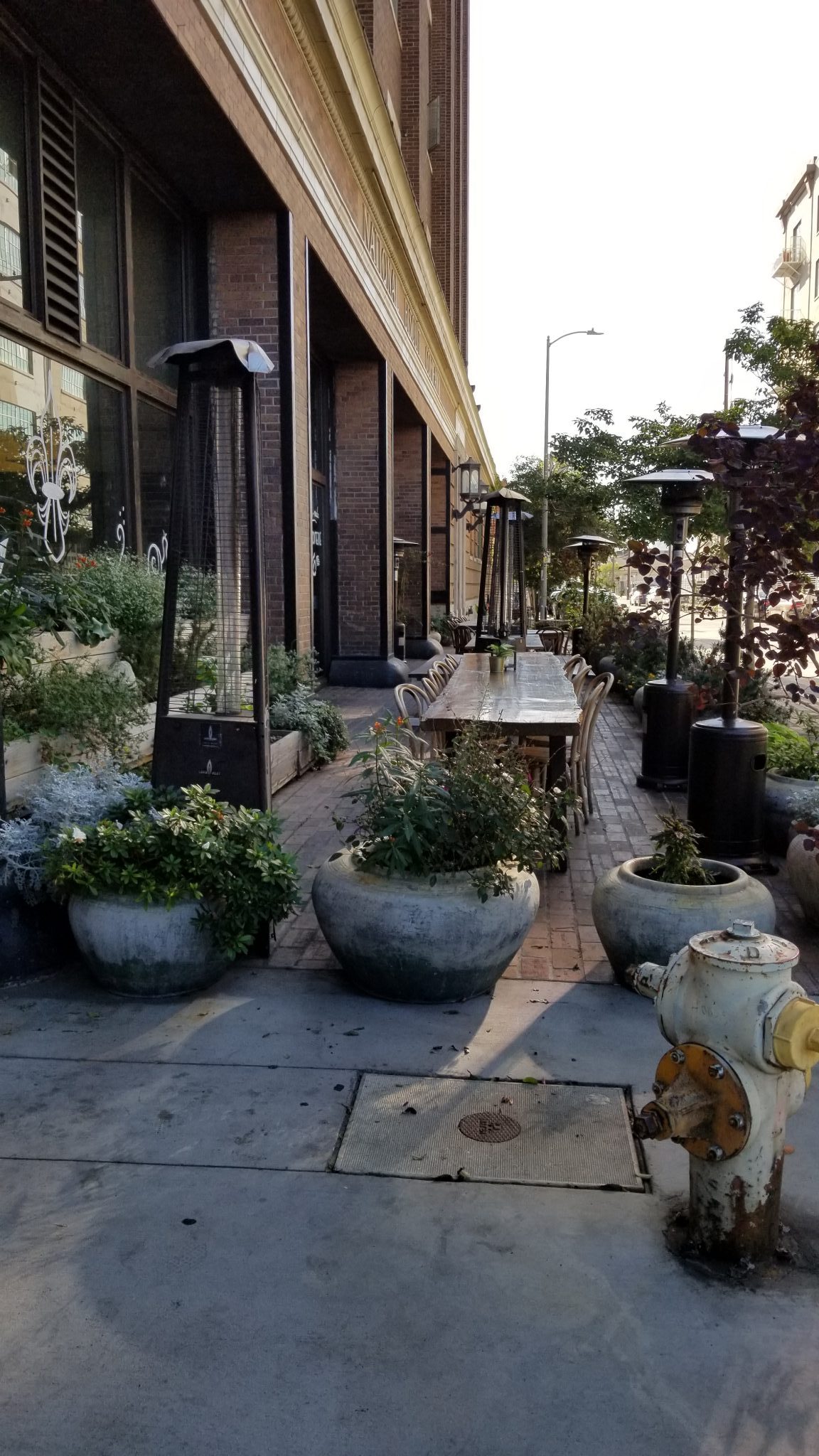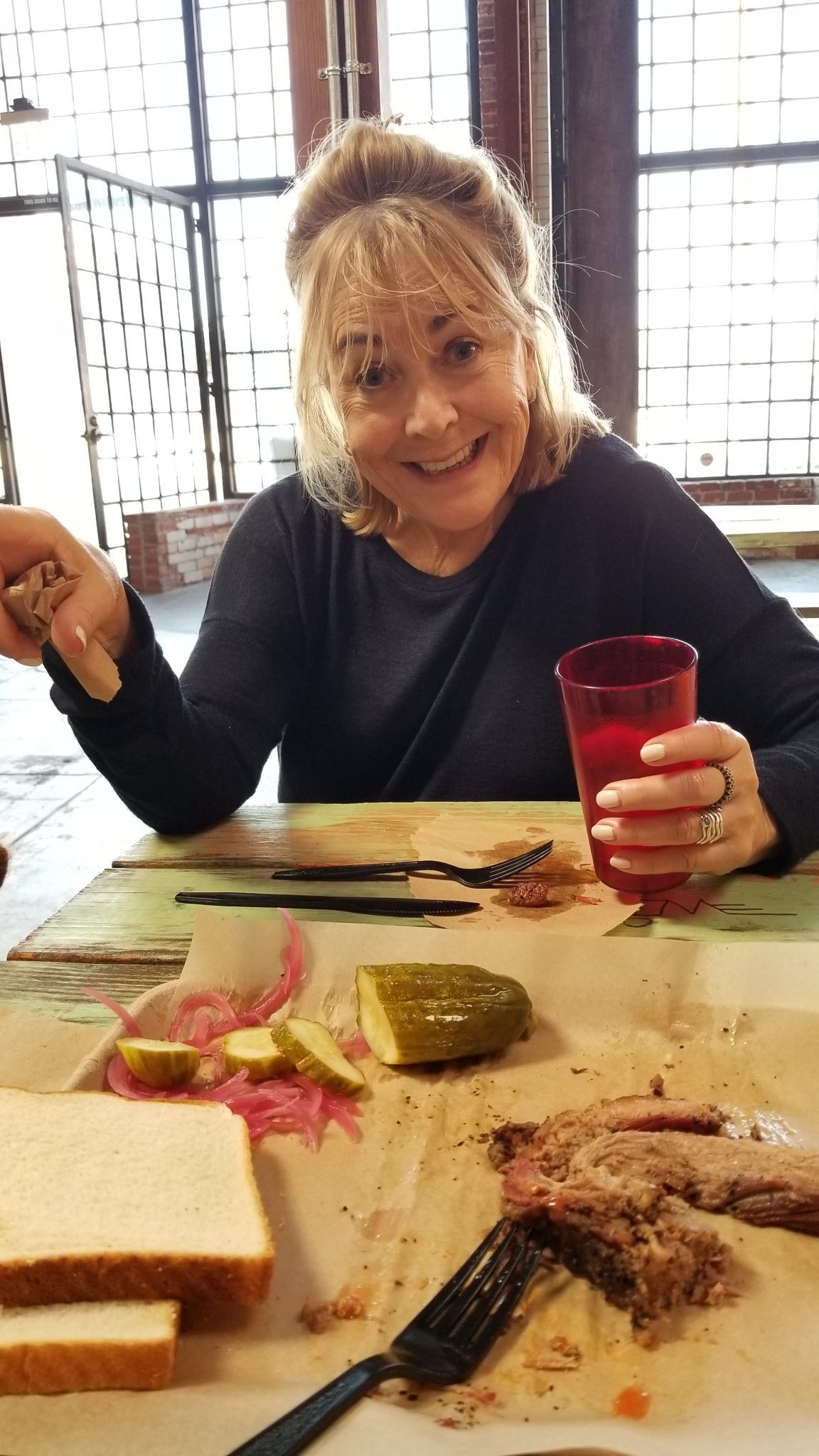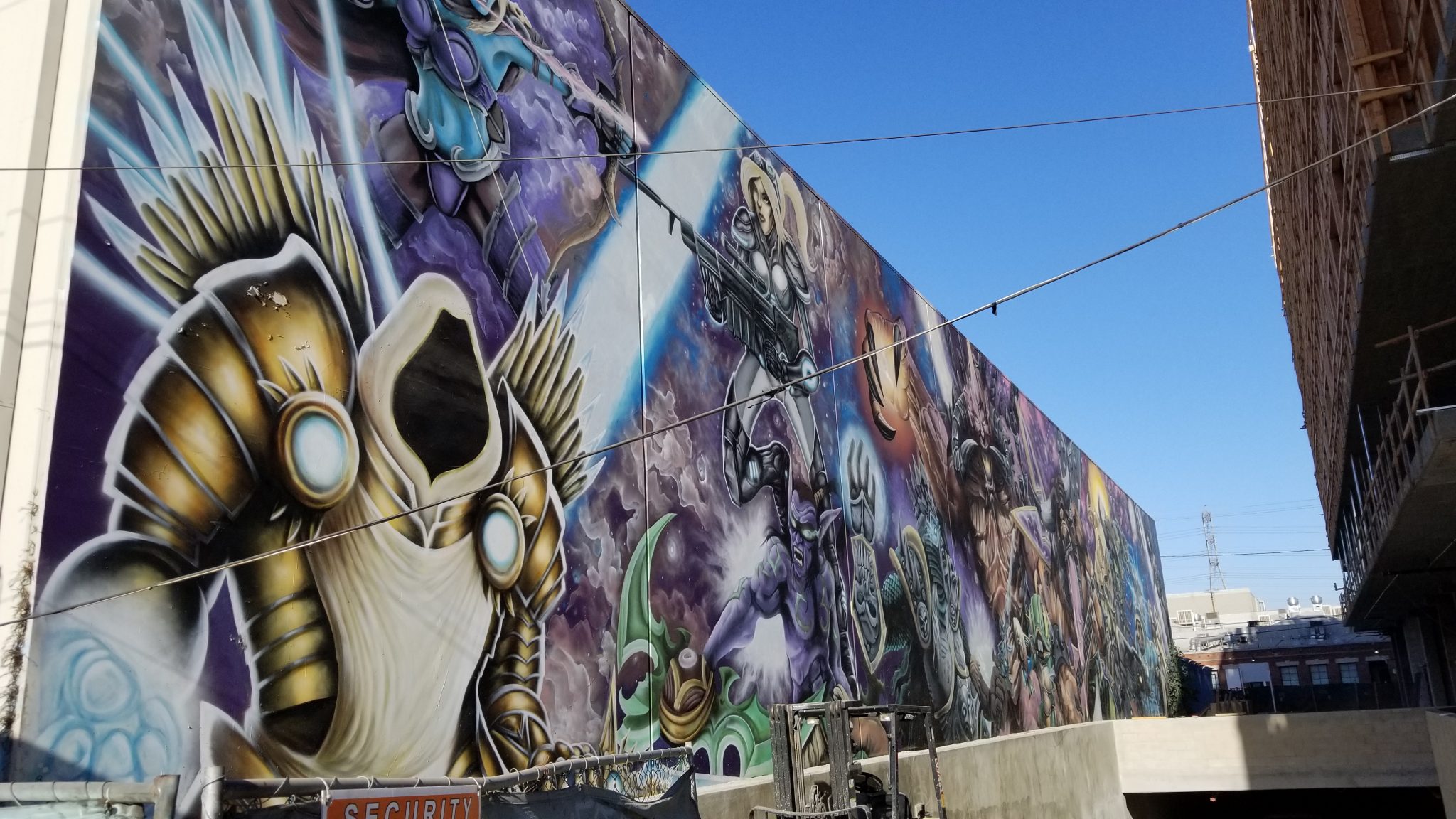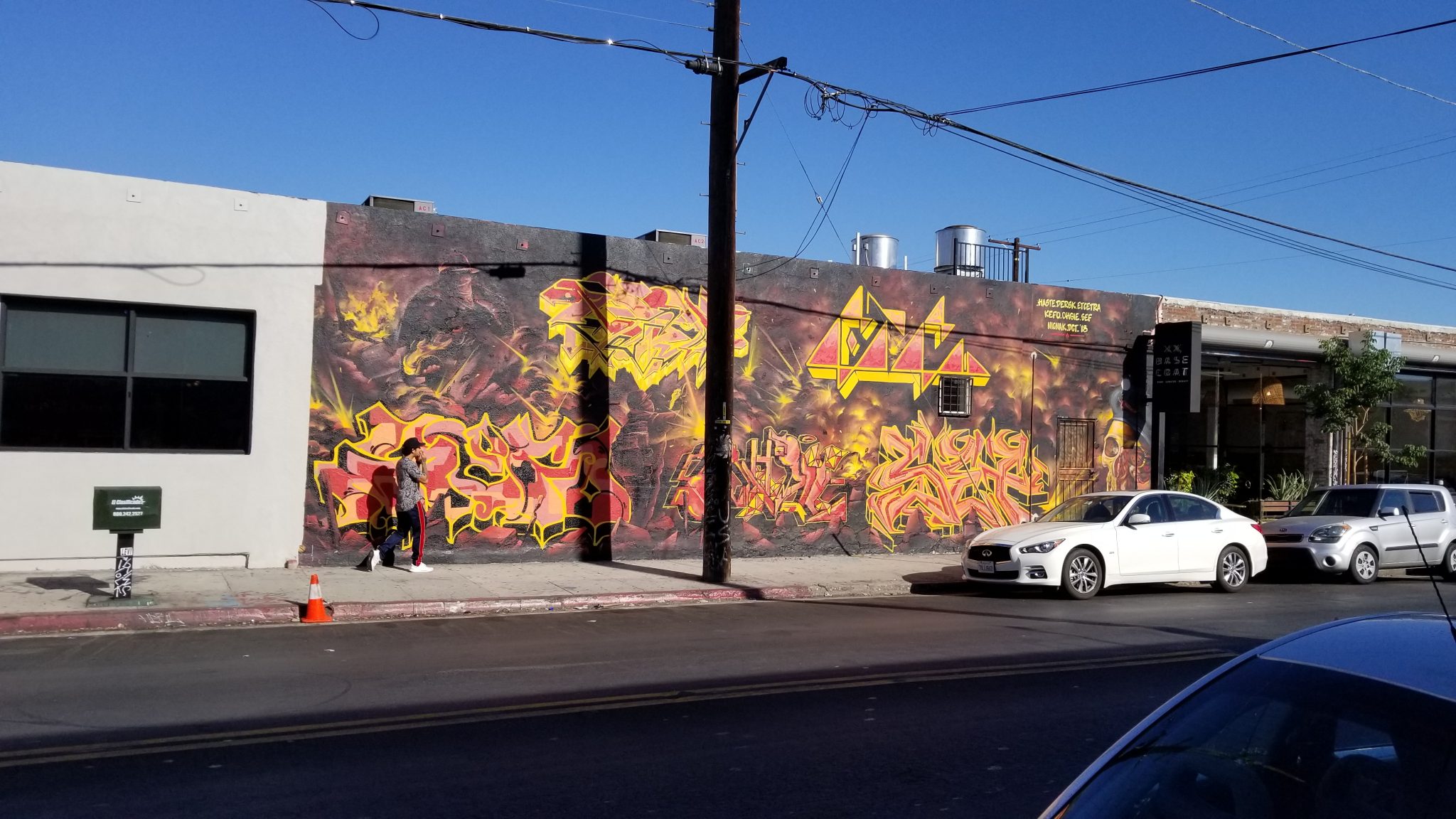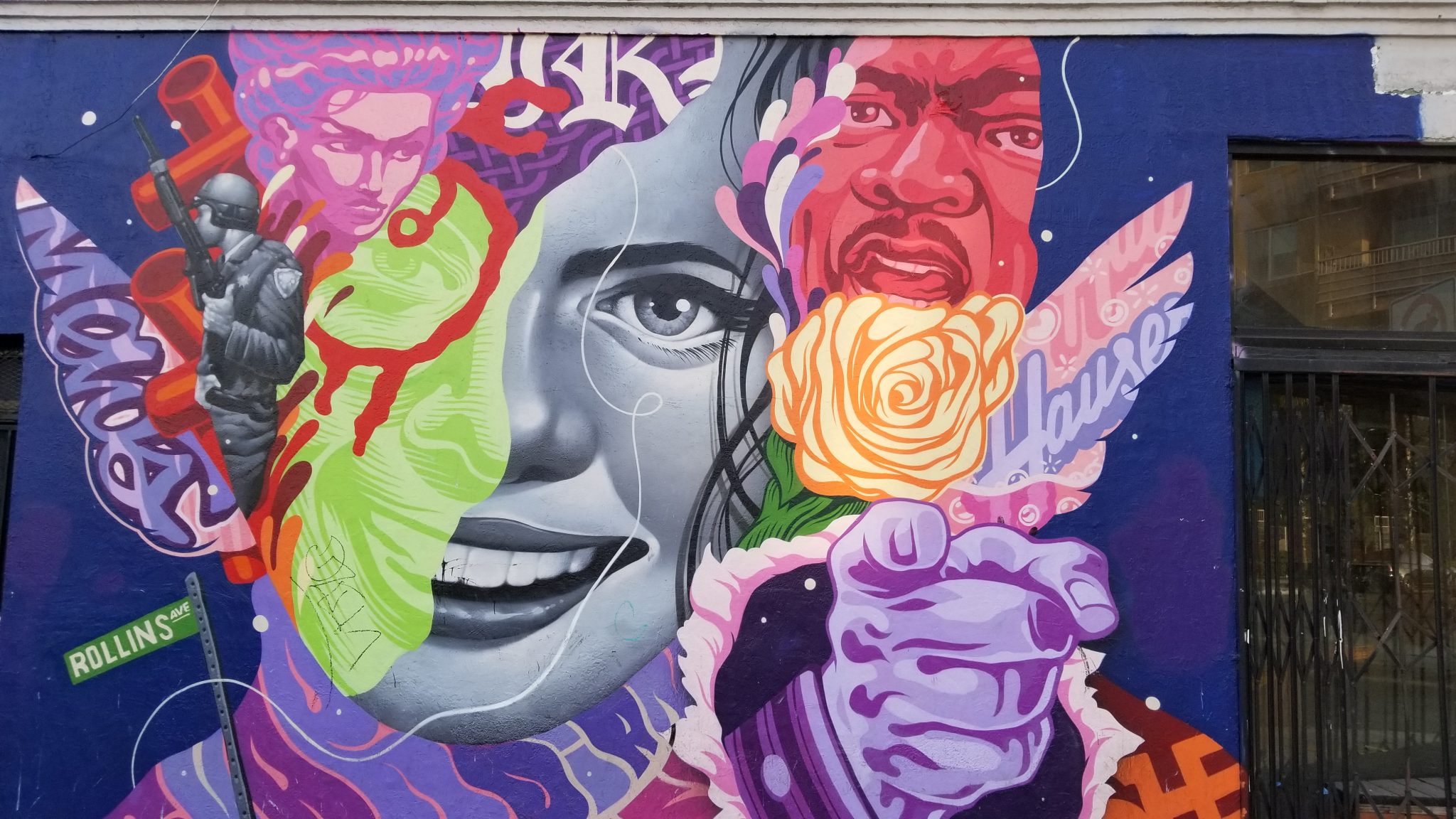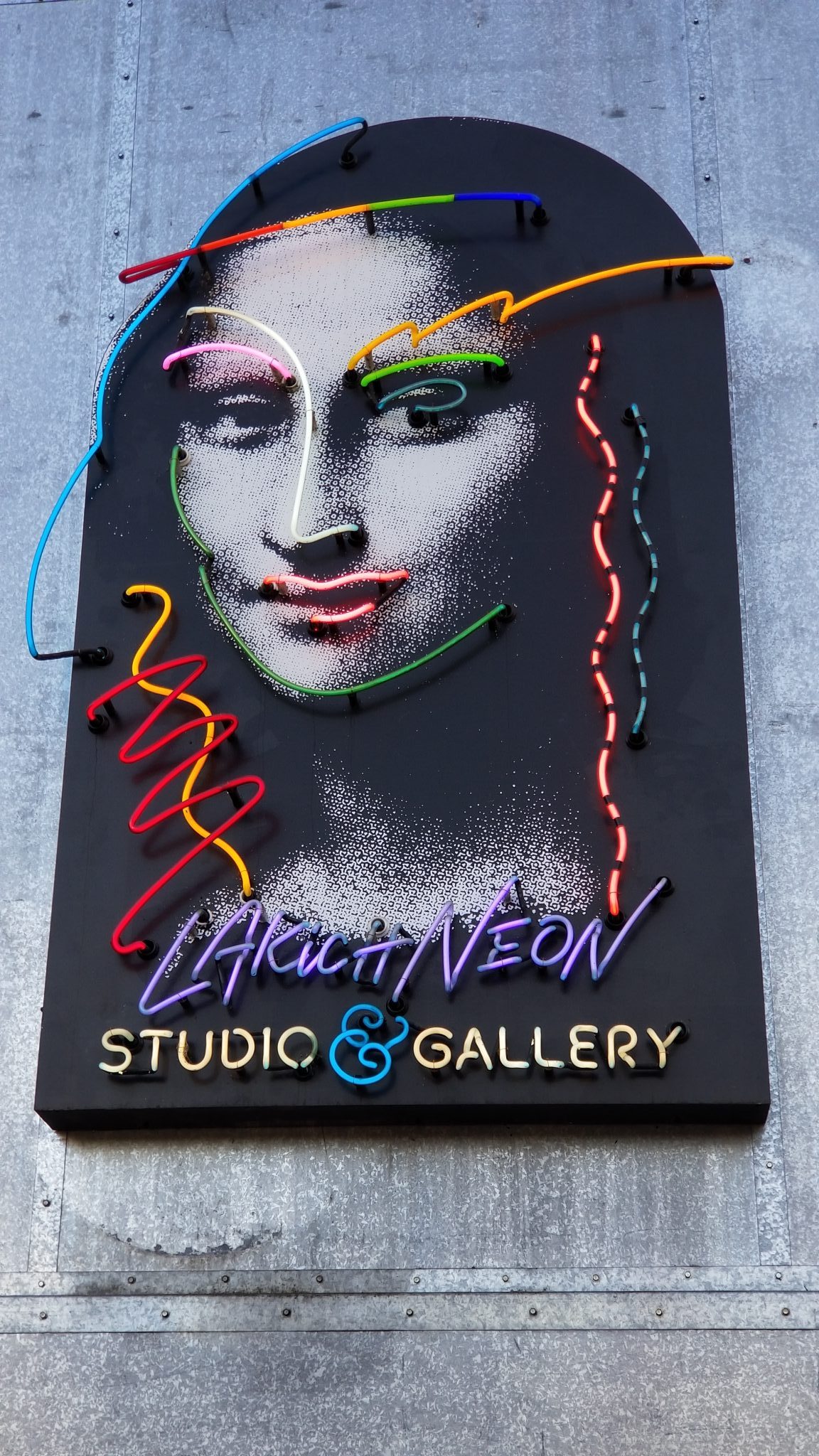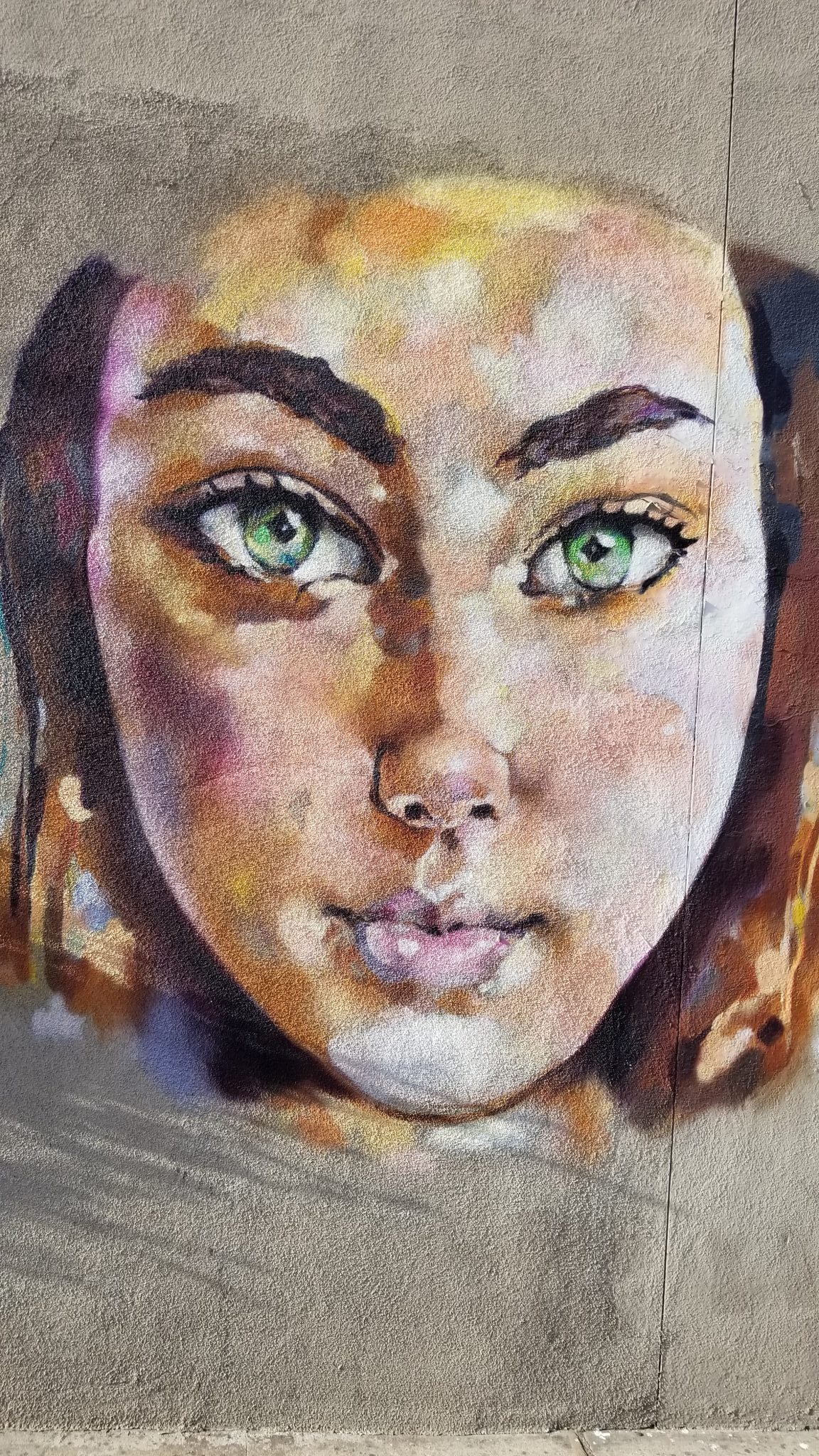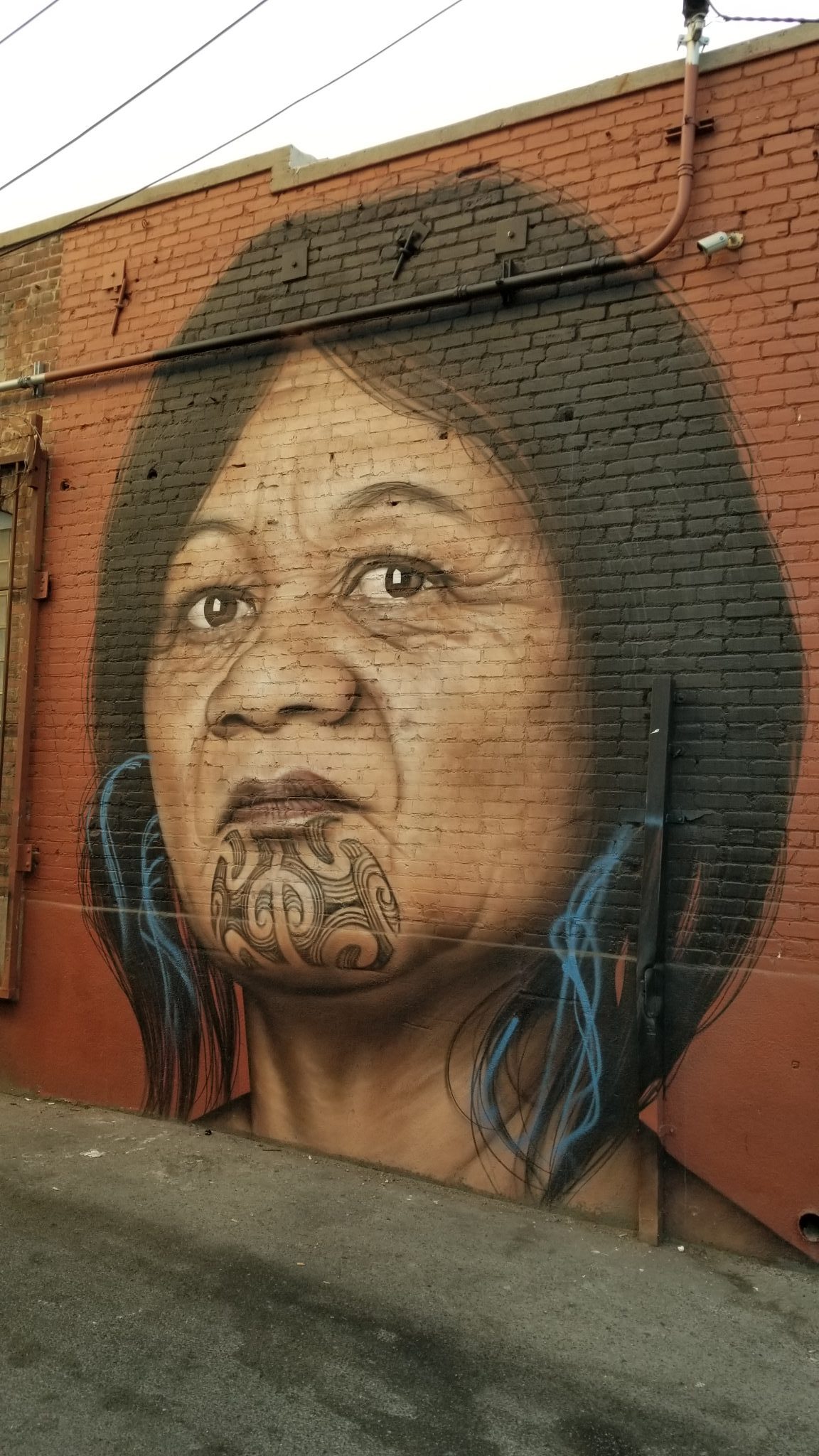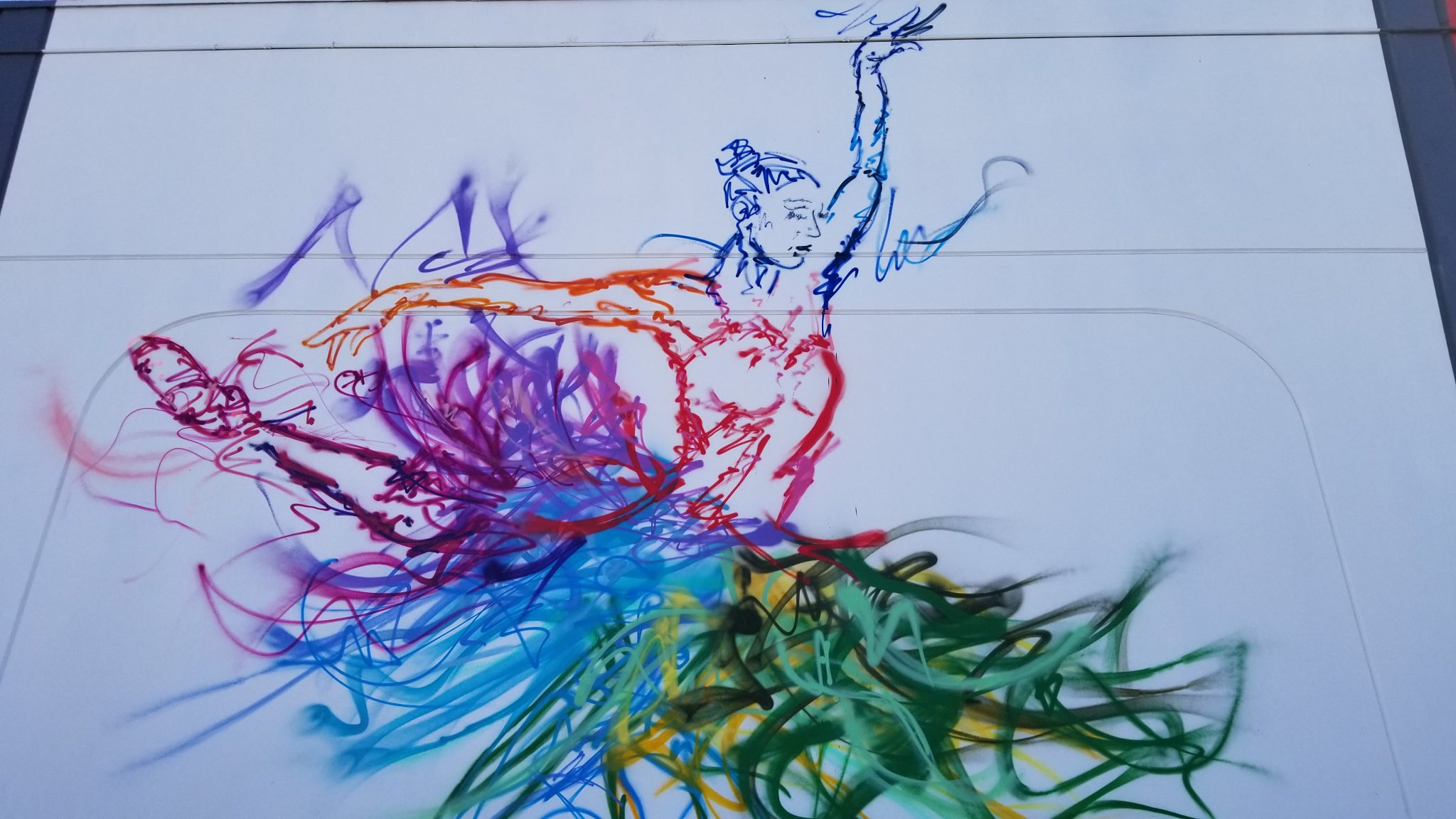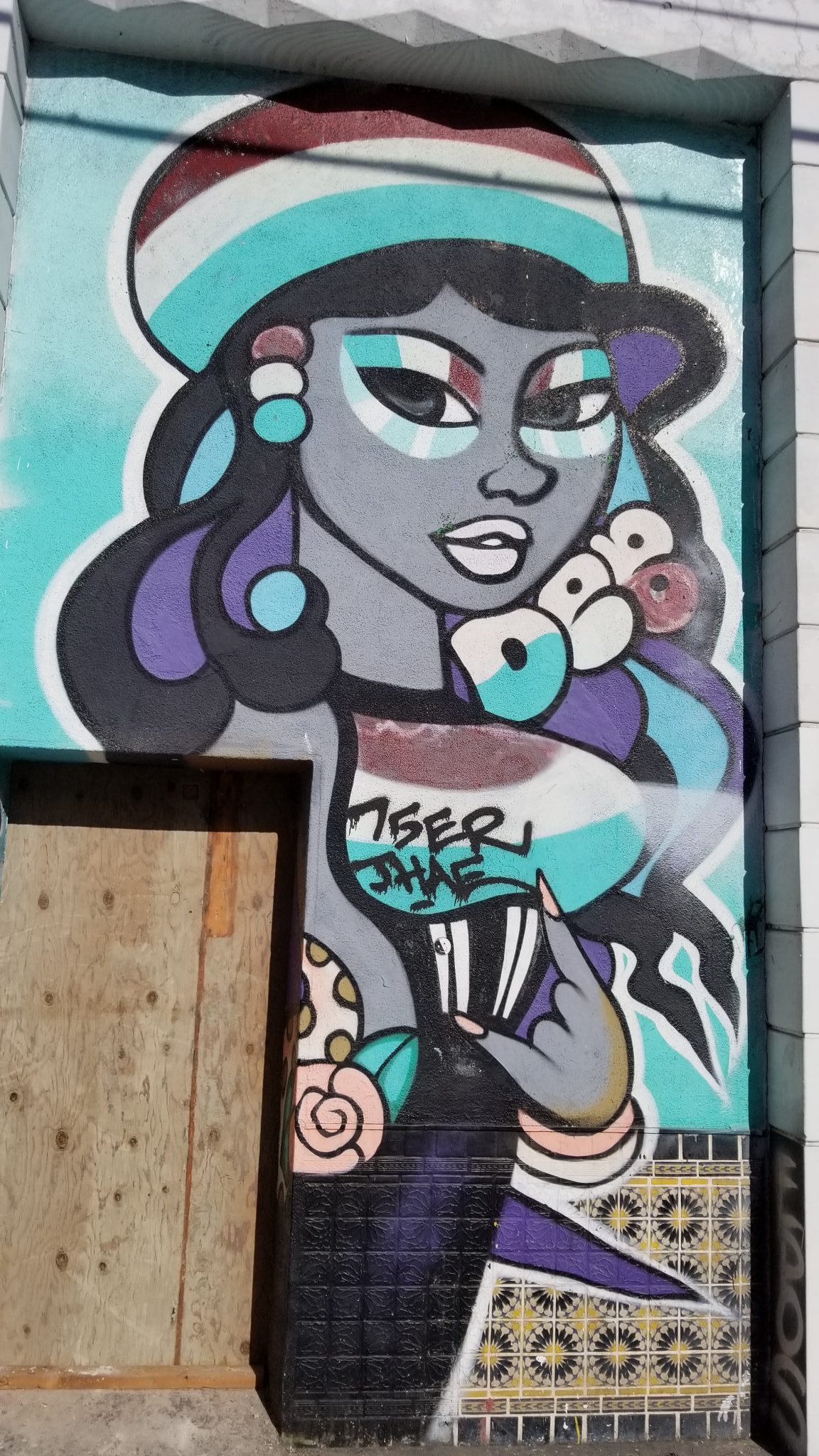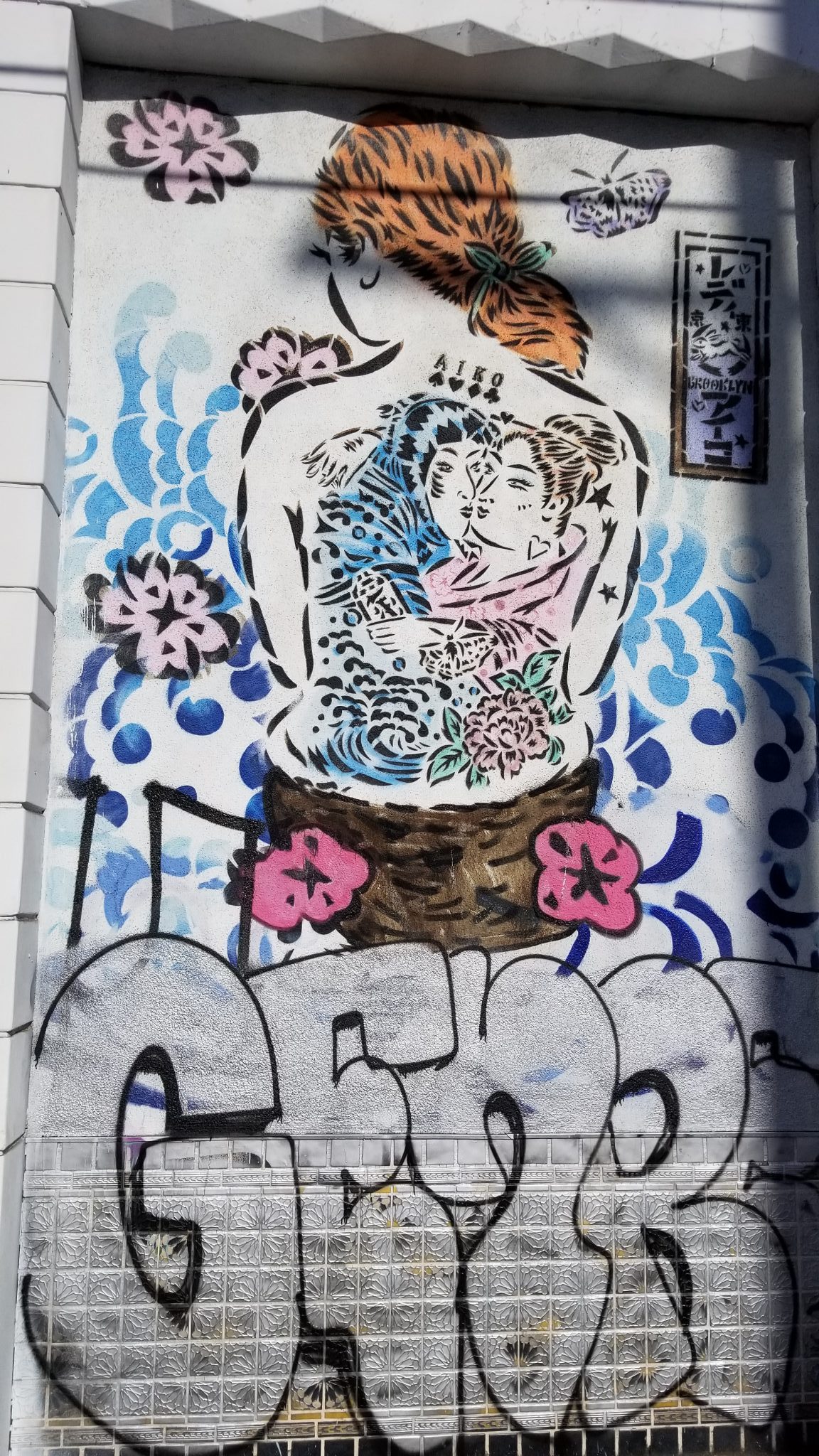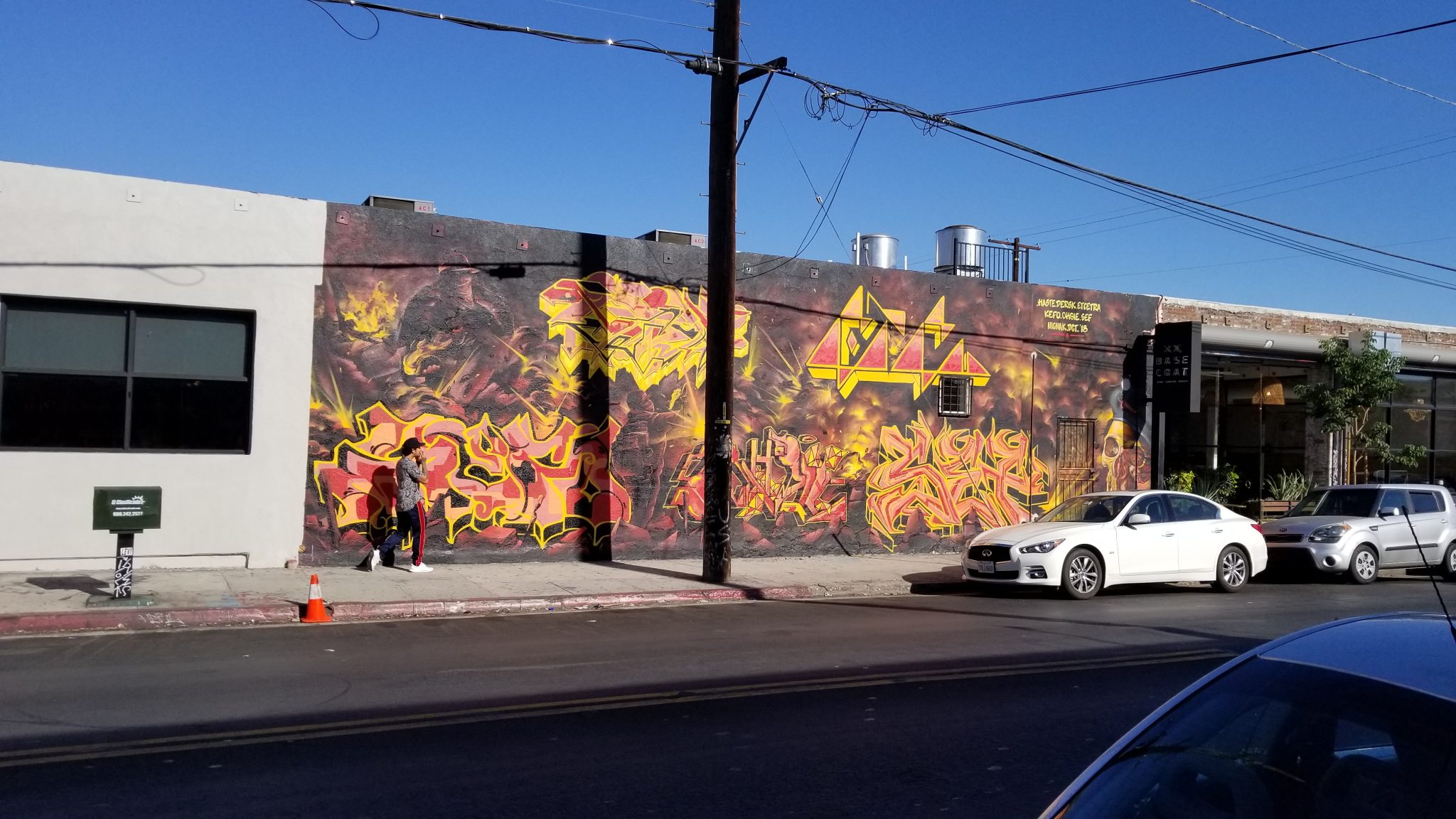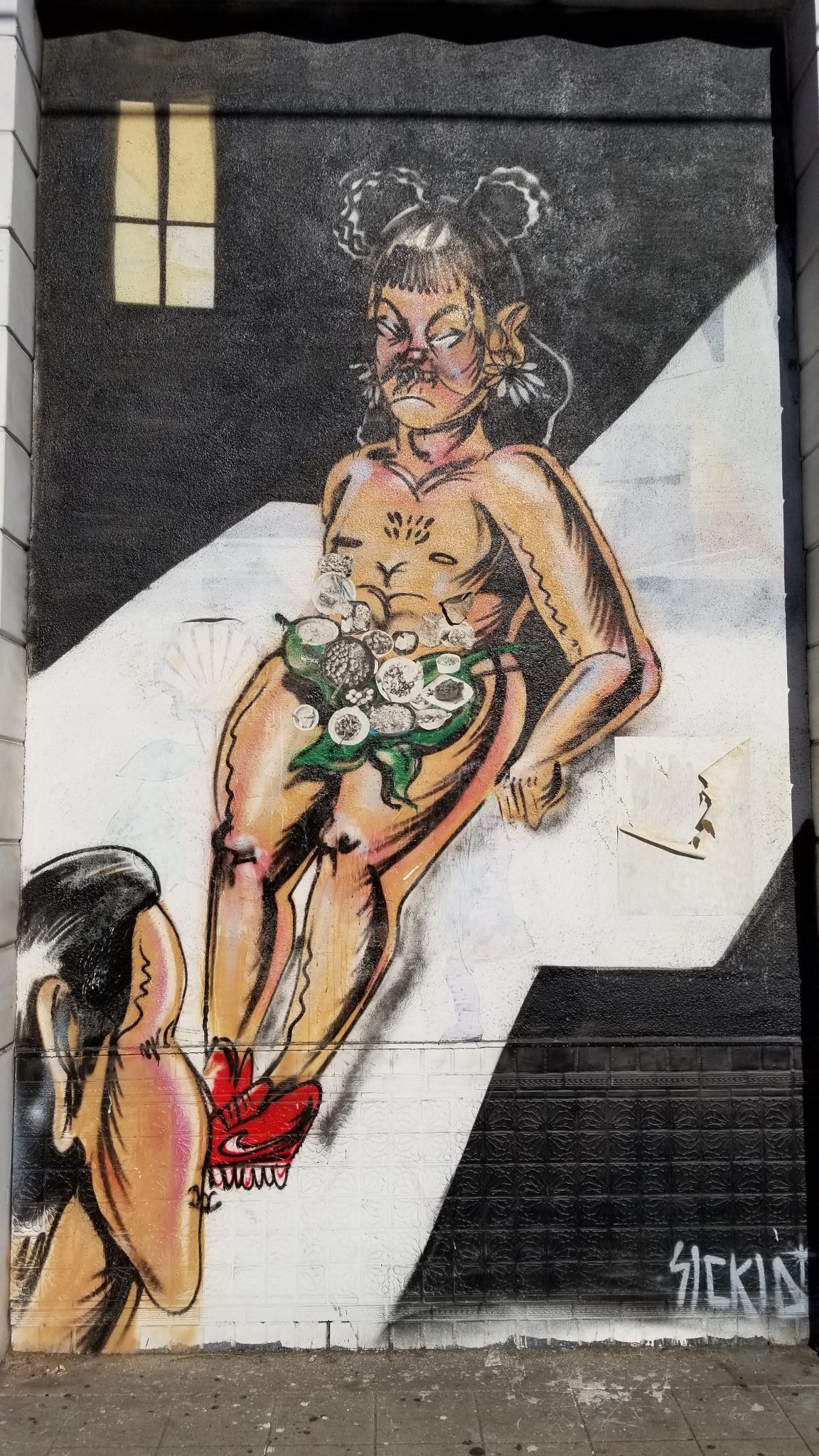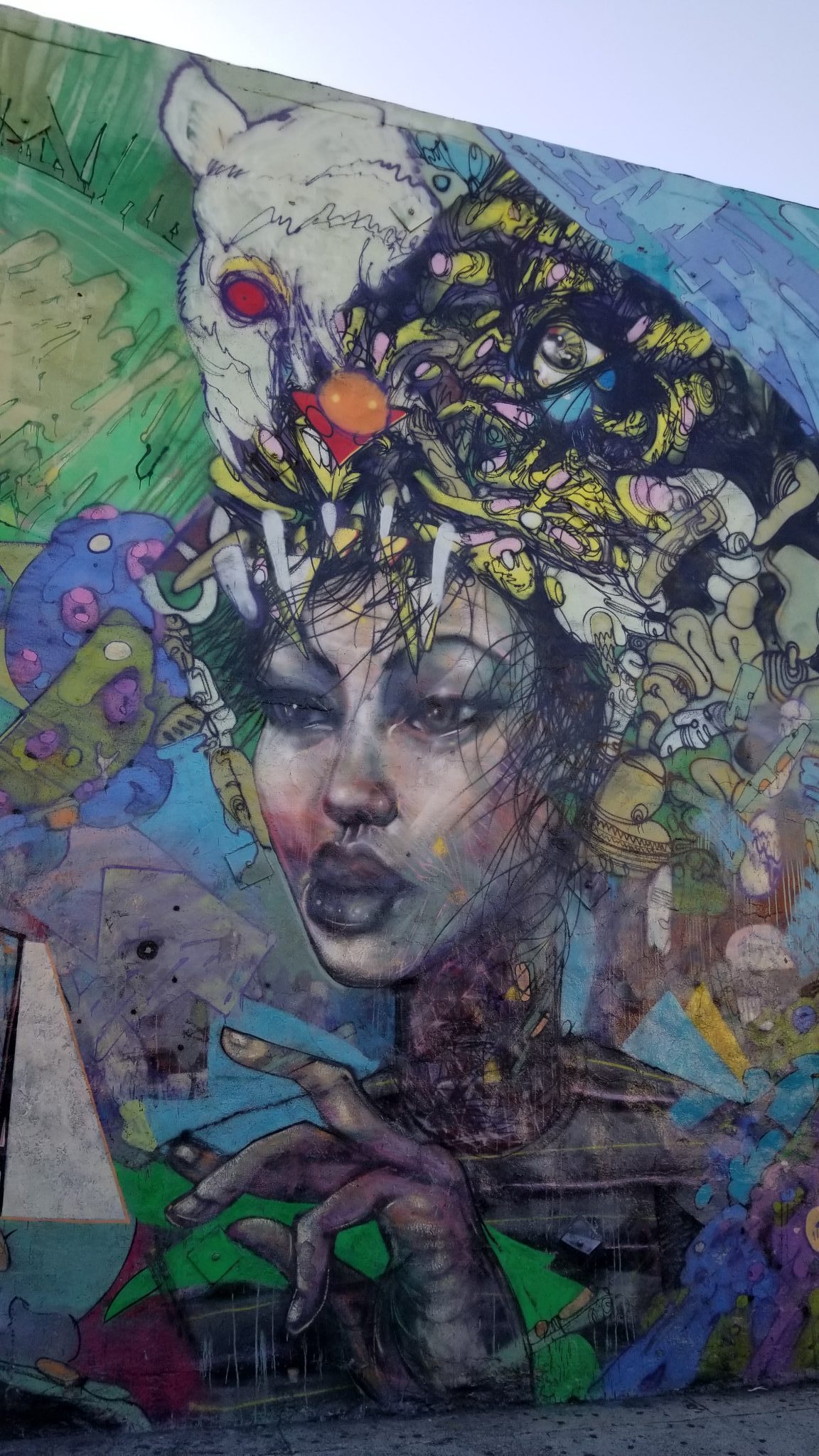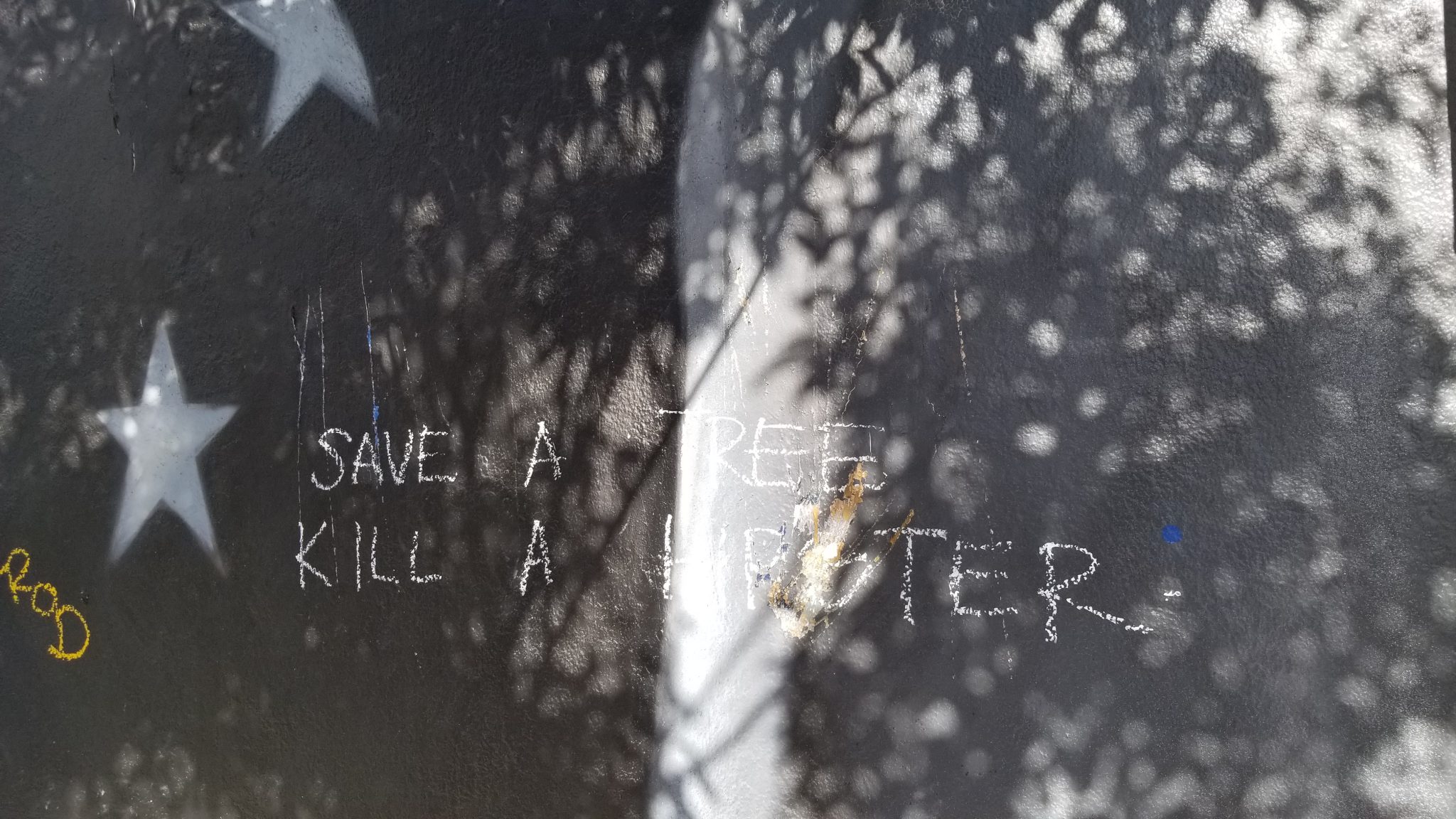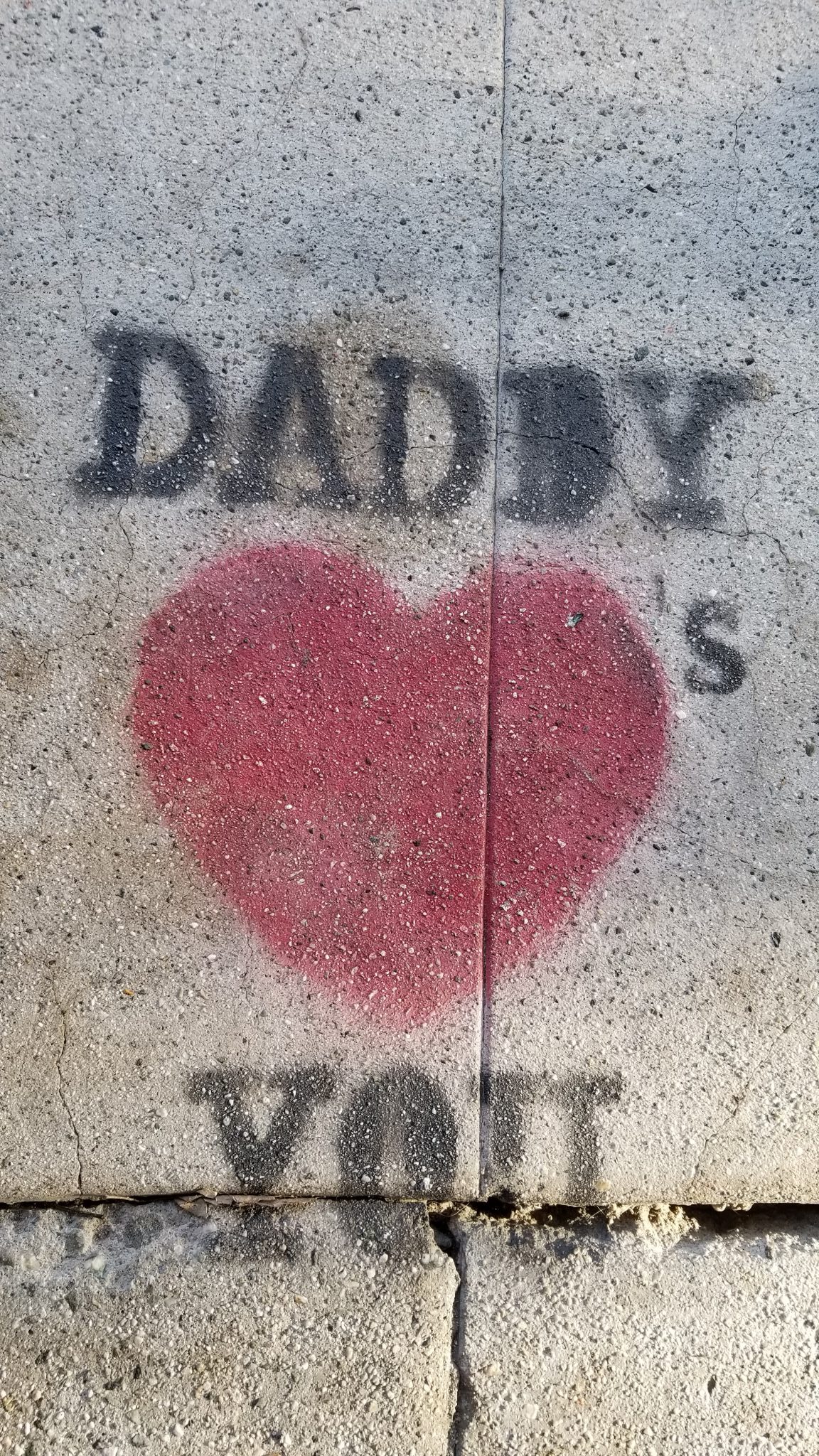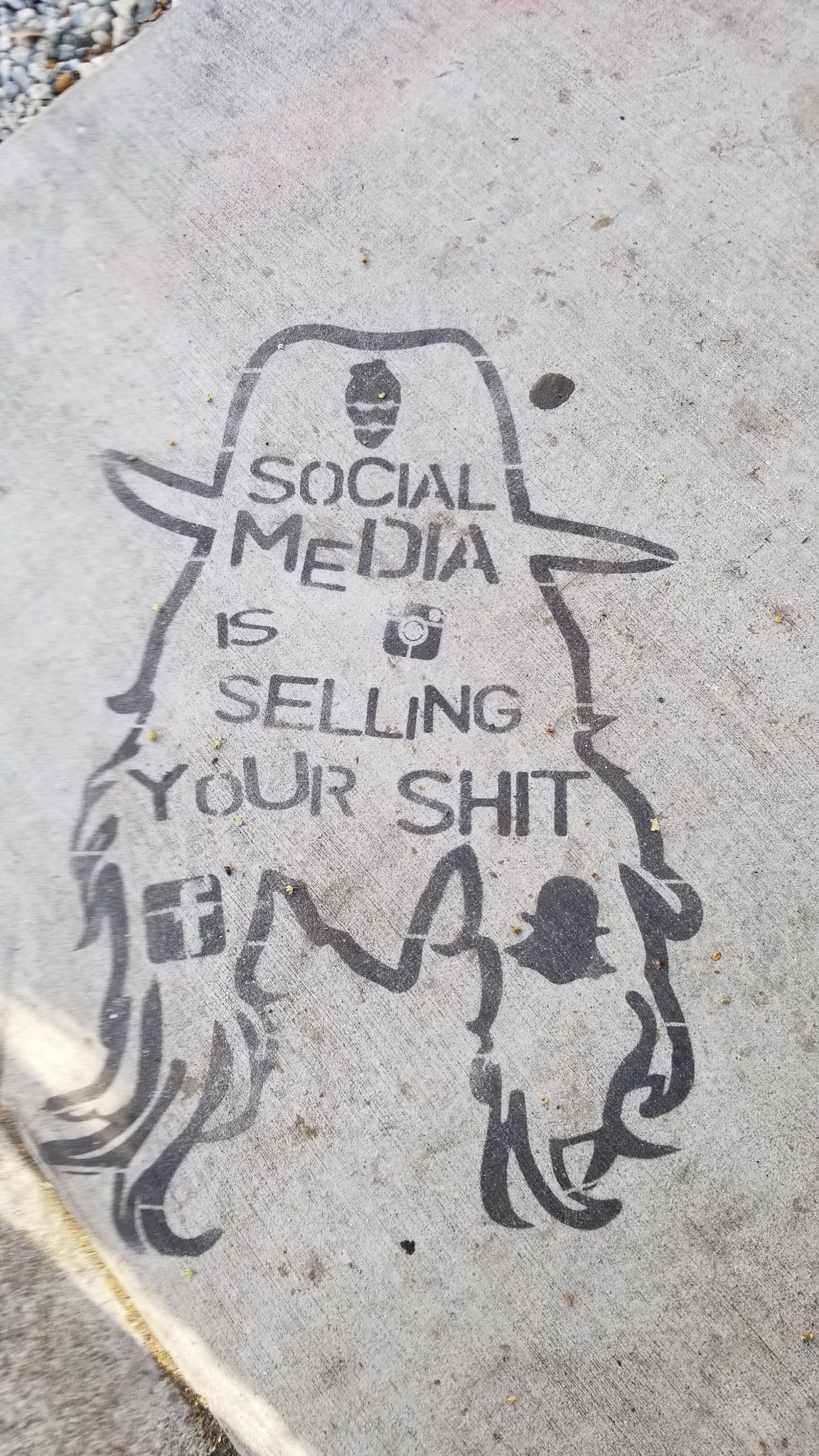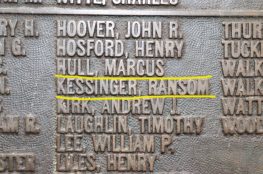We took a slightly more remote way to get to Los Angeles, hoping to avoid going through San Jose during rush hour on the way to Jacob and Carrie Shapira’s studio loft in the Arts District. While traveling Route 152 and US 5, I was struck by just how dry everything is. Bone dry. Steinbeck’s Grapes of Wrath dry. As you drive south from San Francisco, one sees expanses of incredibly engineered agricultural fields, often fruit bearing trees, surrounded by dusty arid desert pavement. When we pulled over to let Teddie do her business my feet stirred up small clouds of lifeless earth, a fine powder that covered my Ariat boots.
Throughout the trip, spaced sporadically along the highway, are signs that rhetorically ask, “Is it wasting water to grow food.” Is it? One sign said, “Congress created Dust Bowl.” Clearly the tug of war over water resources only grows more intense. One wonders how sustainable this is. The green fields of agriculture in California and Arizona are surrounded by the most parched and waterless conditions. The great population centers of southern California continue to grow. How will they survive? How will we continue to have access to cheap agricultural products?
Meanwhile the people of Los Angeles, California and New York City, New York vie to be the most polyglot cities in America. Sometimes I think it's one, then sometimes I think it's the other. Right now, LA wins. My cousin Jacob Shapira has lived in the downtown areas of both. Not just resided in both. He has lived in both, as much as anyone can experience any city. Attracted to the cultural milieu that is offered by great concentrations of people and wealth, the urbanity, the food scene, the arts and polity it produces. My cousin, it seems, would only thrive living in either city.
Los Angeles is by far the most residential of the two cities. Immediately downtown, one sees small suburban style homes with tiny little xeriscape lawns. They line up, block after block, row after row, offering a vision of suburban bliss – but located right downtown in the heart of the city. It's the reason that Los Angles is so spread out, expanding from the center to fulfill a promise of bedroom communities, rather than the cursed concentration of east coast tenement living. Each of the neighborhoods has a name. My cousin Jacob and his wife, Carrie, and their son, Luca, currently live the Arts District. Prior to that, Jacob lived in the La Brae District. There's the Mission District, there's Koreatown, and a whole host of other subdivisions in Los Angeles.
The highlight of my visit was having lunch with Jacob the second day I was there. He graciously gave me a solid couple hours during his work day. He’s a busy fellow. He’s an attorney putting together entertainment contracts for celebrities. I can’t remember when he and I have had that much face time. He is in his mid-thirties; I’m an old guy. Although first cousins, by the time he grew old enough to have a clue, the last thing he probably wanted to do was to hang with old people, with someone with no shared cultural experience. What would we talk about? Motown? I don’t think so. It was wonderful just to talk to him, the California sun shining on us, having a wonderful meal on the dog friendly patio of The Sycamore Kitchen in the La Brea area of Los Angeles. Apparently, ‘dog friendly’ is the cool thing in California now, even shops on the street offer bowls of water, sitting just outside the entrance to their stores.
On my way to the restaurant, I went through Koreatown. I saw something happen that reminded me of the TV show Jill and I love to watch on Hulu called ‘Kim's Convenience.’ The television show is adapted from an award-winning Canadian play about the trials and tribulations of a Korean family living in Toronto that own and operate a convenience store. The reverence for aged relatives, parents, and older people, generally, is woven into the fabric of Korean culture. It plays a huge part in the television show. Many of the story lines juxtapose modern western cultural expectations, inculcated into the second generation Canadian-Korean children, against the strictures of conservative old country Korean mores. It is done with great comedic effect.
So, I’m sitting at a stop light. Crossing the street is an older woman, about my age, walking across the intersection and pulling a two-wheel shopping cart behind her. A young Korean-American man in a Lexus pulls his car into the cross walk, about two or three feet over the white line, into the area designated for people to walk across the street. The older Korean woman has a fit. She refuses to finish walking across the street; she easily could have done so. He was not even close to crowding her way. She let go of her cart and began waving her arms, haranguing that young man, indicating that he needed to back up. And he needs to back up, now. The young man just rolls his eyes, put the car it in reverse, and backs up the two feet, as directed, as ordered, by this incensed woman. Satisfied, she picks up her cart and proceeds across the street. What a hoot!
As described, Jacob and Carrie live in the Arts District. The several adjoining, rehabilitated blocks, are famous throughout the world for the mix of graphic wall art one sees everywhere. Some may call it graffiti art. People have come from as far away as Brazil just to paint murals on the side of a cinder block building. All the shops and restaurants cater to a certain set. Let’s call them art lovers. There are galleries everywhere. Some of the coolest restaurants and living quarters I've ever seen. Jacob and Carrie have a studio-loft apartment, in a very secluded small development of other studio-lofts, surrounded by walled-in enclosures with sturdy locked gates to provide security. The courtyards are incredibly well thought-out, and the resulting space is very comfortable. They give the illusion of not being downtown, not being surrounded by sketchy industrial dystopic areas where sidewalk campers live among the detritus of the homeless.
In addition to the pervasive graphic wall art, there is also graphic graffiti. Some of it very political. Some of it whimsical. One particularly disturbing, and a very reactionary, political message was reproduced in various locations throughout the district. It calls on the reader to: “Save a tree kill a hipster.” At first, I was a little thrown off by it. After a while, I think I figured it out. It was an attack, an expression to vent anger and frustration about the gentrification of this area of Los Angeles, the increased cost of housing, sundries, groceries, and entertainment. It is excessively high, too. The people who used to live in this area have basically been forced out. Even the homeless have dispersed to other parts, but they haunt the periphery. They construct the most horrible-looking tent cities on narrow concrete strips by the freeway exits in downtown LA.
My Aunt Jeanne, Jacob's mother, was visiting him while I was in LA. Jeanne is like a second mother to me. She was my tour guide around the Arts District. Let me tell you. That woman can bogie. She is no spring chicken, but she sure sets a mean walking pace. She offered a guided tour of the district. She's done her homework, too. She knew the history of several buildings and the current function of many. I see Jeanne, next, in her home in Naples, FL.
